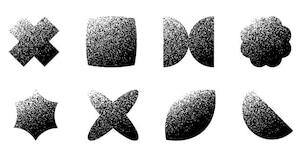Understanding When to Avoid C-Betting in Poker
C-betting, or continuation betting, is a crucial strategy in poker that can significantly enhance your gameplay when executed correctly. However, there are specific situations where c-betting can be detrimental, potentially leading to significant losses. This article will explore five key scenarios where c-betting may not be the best approach, helping you refine your strategy for better outcomes at the tables.
- Key Situations to Avoid C-Betting:
- Low, connected boards that favor the opponent’s range.
- When holding strong hands that benefit from checking.
- Against opponents who have shown aggression.
- In scenarios with a low stack-to-pot ratio.
- When your range lacks nut advantage.
1. Low, Connected Boards
Low, connected boards often hit the Big Blind’s calling range effectively. Since players in the Big Blind position typically have a wider range of hands from which to draw, they can have a higher concentration of strong hands, including two-pair combinations. For example, if the flop comes 7♠ 6♣ 5♦, the Big Blind is likely to have a strong range of hands that can hit this board, making c-betting a risky move.
In this scenario, the Big Blind can donk bet approximately 26% of the time with a pot-sized bet, indicating they’re willing to defend their range aggressively. Therefore, c-betting here can expose you to significant risk, especially if your hand has limited equity against their potential holdings.
2. Strong Hands that Benefit from Checking
When you hold strong hands, such as overpairs (AA, KK), it may seem counterintuitive to check instead of c-betting. However, checking with these hands can be beneficial in certain situations. The rationale behind this strategy is twofold: it protects your checking range and allows you to induce bluffs from your opponents.
For instance, if you check with AA on a board of K♣ 10♠ 3♦, you can encourage your opponent to bet with weaker hands, allowing you to extract more value on later streets. This strategy can also prevent you from over-representing your hand strength, making it harder for your opponent to gauge your true range.
3. Facing Aggressive Opponents
In situations where your opponent has shown aggression, c-betting can be a dangerous move. Aggressive players are likely to respond with raises, putting you in a tough spot. For example, if you c-bet on a board that heavily favors your opponent’s range, they may exploit your bet by check-raising with a wider range of hands.
It’s essential to recognize when your opponent is likely to respond aggressively and adjust your strategy accordingly. By checking instead of c-betting, you can maintain control of the pot and avoid unnecessary confrontations.
4. Low Stack-to-Pot Ratio
A low stack-to-pot ratio can also influence your c-betting strategy. When the ratio is small, it means there’s less incentive to build the pot on the flop. In such cases, it’s often better to play passively and allow the pot to develop naturally. For example, if you have a stack-to-pot ratio of 2:1, pushing too aggressively with c-bets can lead to unfavorable situations.
In these instances, it’s often more beneficial to check with strong hands and wait for the turn or river to extract value. This approach can also help you protect your range, making it harder for your opponents to exploit your strategy.
5. Lacking Nut Advantage
When you lack a nut advantage on the board, it’s typically a sign to be cautious with your c-betting. For example, on a board like 9♥ 8♥ 5♠, the player in position may have a higher concentration of strong hands, such as two-pair or sets. If your range doesn’t contain enough strong hands to justify a c-bet, you risk becoming too predictable and exploitable.
In this situation, it’s wise to check more frequently, allowing your opponent to take the lead and potentially overcommit with weaker hands. By maintaining a balanced approach, you can protect your range and minimize losses.
Reader Q&A
What is c-betting in poker?
C-betting, or continuation betting, is when a player who raised pre-flop continues to bet on the flop, regardless of whether they have improved their hand. It’s a common strategy to maintain aggression and pressure opponents.
Why should I avoid c-betting on low, connected boards?
Low, connected boards often favor the opponent’s range, making it more likely they have strong hands. C-betting in these situations can expose you to significant risks, especially if your hand has limited equity.
How can checking with strong hands be beneficial?
Checking with strong hands can protect your range and induce bluffs from opponents. It allows you to extract more value on later streets and prevents you from over-representing your hand strength.
By understanding these five situations where c-betting can be detrimental, you can refine your poker strategy and enhance your overall gameplay. Remember, the key lies in recognizing the dynamics at play and adjusting your approach accordingly.











